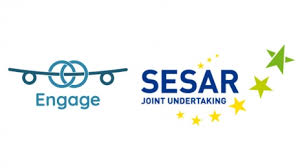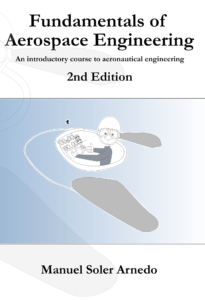A pilot/dispatcher support tool based on the enhanced provision of thunderstorm forecasts considering its inherent uncertainty
Funding Entity:
SUB-GRANT AGREEMENT in connection with the provision of funding for a PhD studentship with the support of the Engage Knowledge Transfer Network. This project has received funding from the SESAR Joint Undertaking under the European Union’s Horizon 2020 research and innovation programme under grant agreement No 783287

Institutions:
- Universidad Carlos III de Madrid: Manuel Soler (PI), Eduardo Andrés.
Abstract:
Thunderstorms represent a major source of disruption, delays and safety hazards in the ATM system. They are challenging to forecast and evolve on relatively rapid timescales. Even for the most advanced met products (which most stakeholders lack of), thunderstorm forecasts are provided in a deterministic manner. Both met provision and ATM use of met information need to consider the uncertainty in the forecasted evolution of these phenomena.
The present PhD proposal (STORMY) pursues three scientific goals, namely:
- The development of new models for the stochastic evolution of thunderstorms, enhancing current met products. A product termed RDT (Rapidly Developing Thunderstorms) will be used.
- The development of short-term, stochastic trajectory planning algorithms around thunderstorms, enhancing current practices in thunderstorm avoidance (by pilots/controllers). We will pay attention to operational constraints (typically constraining very much the problem and requiring of robust and fast solutions), which push the challenge.
- The development of a use case in which to demo library support tool for pilots/dispatchers based on the enhanced provision of met products. It would be aiming at enhancing pilots and dispatchers’ decision-making.
The goals of this PhD thesis are aligned with Engage’s Thematic Challenge 3 “Efficient provision and use of meteorological information in ATM”. The PhD thesis would require a multidisciplinary approach (as the challenge itself), including disciplines such as meteorology, statistics, control, and ATM. We have built a consortium to build up multidisciplinary research, yet incorporating industrial actors (dispatchers) and stakeholders (met offices).
We will use different ground breaking methodologies to approach the different problems: on the one hand, advanced statistical methods (e.g., Bayesian model averaging, krieging) for the calibration, probabilistic fitting, and assimilation of thunderstorms forecasts and data; then, different strategies for short-term trajectory planning under uncertainty, which combine stochastic optimal control techniques, differential algebra, and GPU based.
The ambition is to obtain the following results/outputs:
- Capabilities to produce European-wide probabilistic forecasts on the 3D & temporal evolution of thunderstorms in time horizons of 15 to 45 min. These forecasts will need RDT product input and its goodness of fit will be scientifically assessed. Applications of this enhanced met product would be vast, not only focused on its use by airlines/pilots/dispatchers (as it will follow in this PhD), yet also for the Network Manager/ANSPs/Airports to better forecast sector complexity and take better informed, anticipated capacity measures, or to enhance ATCOs situational awareness and aid their decisions on separation assurance, etc.
- Robust, fast, and operationally compatible 3D & temporal trajectory generator capable of considering the uncertainties in the environment (essentially due to storms) and finding solutions that are safe and robust in look-ahead times of 15 to 45 min. Applications of these algorithms would be either airborne (to aid pilots in taking anticipated, safer decisions when facing storms) or ground-based (to aid controllers, proposing a set of robust, safe solutions as possible advisories). Because the algorithms would not be tailored to solve multi-aircraft scenarios in thunderstorm conditions, the applicability would be (by now) restricted to the former.
- Two demo libraries running on an existing product (eWAS dispatching product by GTD). The ambition is to conduct research with an operational target in mind and to demonstrate that ground-breaking scientific research is compatible with operational practices.





